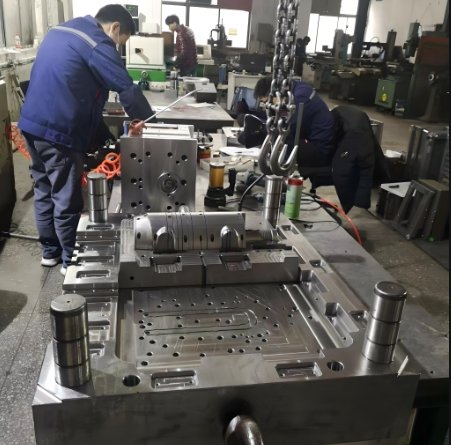In the world of manufacturing, two methods dominate: 3D printing and injection molding. Each method has its advantages, but which one is right for your business? This article compares 3D printing and injection molding by examining factors like cost, speed, and quality.
What Is Injection Molding?
Injection molding is a manufacturing process used to create parts by injecting material into a mold. This method is commonly used for mass production of products like automotive parts, electronics, and consumer goods. Injection molds are made by mold makers who ensure the mold’s precision and durability.
What Is 3D Printing?
3D printing, also known as additive manufacturing, involves building objects layer by layer from a digital file. This method is often used for prototyping, small batch production, and custom parts. Unlike injection molding, 3D printing doesn’t require molds, making it more flexible.
Cost Comparison: 3D Printing vs Injection Molding
One of the main considerations when choosing between 3D printing and an injection mould company is cost.
3D Printing Costs
3D printing is generally less expensive for small production runs. You don’t need to pay for molds, which can be a large part of the cost in injection molding. Additionally, it is ideal for rapid prototyping. The costs are largely based on material usage and print time.
Injection Molding Costs
Injection molding is typically more cost-effective for large-scale production. The upfront cost of creating injection molds can be high, but once the mold is created, the cost per part decreases significantly. It’s important to consider that the high initial investment in molds means injection molding works best for large quantities.
Speed: 3D Printing vs Injection Molding
3D Printing Speed
3D printing is fast when it comes to creating prototypes or small batches. The production time can be quicker because it doesn’t require mold creation. However, it may take longer for larger objects or complex geometries.
Injection Molding Speed
Injection molding is faster for large production runs. Once the mold is made, parts can be produced quickly. However, the time to create the initial mold can take several weeks, which may slow down the overall process. For large quantities, injection molding is typically faster than 3D printing.
Quality and Precision: 3D Printing vs Injection Molding
3D Printing Quality
3D printing offers flexibility and can produce highly complex designs. However, the quality may vary depending on the machine and material used. It’s often used for functional prototypes but may not always match the quality of parts made by injection molding.
Injection Molding Quality
Injection molding is known for producing high-quality, consistent parts. The use of injection molds ensures precise shapes and dimensions, making it suitable for mass production where uniformity is essential. For products requiring high durability and strength, injection molding is often the better choice.
Customization: 3D Printing vs Injection Molding
3D Printing Customization
3D printing is ideal for producing customized, one-of-a-kind parts. You can easily alter the design during production. This method is perfect for industries like medical devices or aerospace, where customization is often required.
Injection Molding Customization
While injection molding is excellent for mass production, customization can be more difficult. Once the injection molds are made, changes to the design can be costly and time-consuming. However, injection molding allows for the production of consistent, uniform parts at a large scale.
Materials Used: 3D Printing vs Injection Molding
3D Printing Materials
3D printing uses a variety of materials, including plastics, metals, and resins. However, the range of materials is more limited compared to injection molding. The materials used in 3D printing may not always offer the same strength and durability as those used in injection molding.
Injection Molding Materials
Injection molding allows the use of a wide variety of materials, including thermoplastics, thermosets, metals, and even elastomers. These materials are often stronger and more durable, making injection molding the go-to method for producing parts that need to withstand harsh conditions.
Flexibility: 3D Printing vs Injection Molding
3D Printing Flexibility
3D printing offers high flexibility in terms of design. Since it’s an additive process, there are fewer limitations on geometry. You can create complex shapes that may not be possible with injection molding.
Injection Molding Flexibility
Injection molding is less flexible when it comes to design changes. Modifications to the injection molds can be costly and time-consuming. However, once the mold is made, it is efficient for mass production of parts with consistent quality.
When to Use 3D Printing vs Injection Molding
Use 3D Printing When:
- You need rapid prototyping.
- The production run is small.
- Customization is a priority.
- You need highly complex designs.
Use Injection Molding When:
- You need to produce large quantities.
- The product needs to be durable and strong.
- Precision and consistency are crucial.
- You have a large budget for initial mold creation.
Conclusion: Which Is Better?
Both 3D printing and injection molding have their advantages. For small runs and prototypes, 3D printing may be the better option. However, for large-scale production of durable parts, an injection mould company and injection molding are superior. The decision depends on your specific needs, budget, and production goals.

